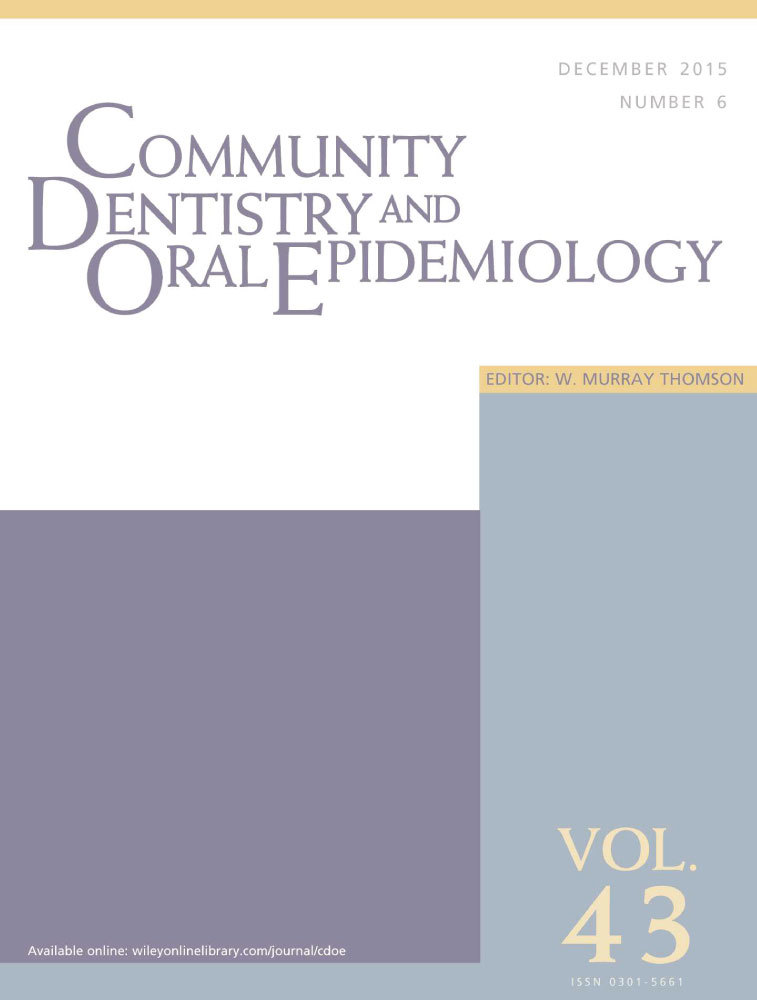Is the association between socioeconomic status and nonreplaced extracted teeth mediated by dental care behaviours in adults?
Abstract
Objective
To investigate whether the association between socioeconomic status (SES) and number of nonreplaced extracted teeth (NRET) is mediated by dental care behaviours (DCBs) in adults.
Methods
A random sample of adults, who participated in the 2010 dental telephone survey (n = 1100) in Tehran, Iran, was investigated. The outcome was self-reported NRET due to dental caries or periodontal diseases. The main exposures were wealth index and education; and the potential mediators were the frequency of tooth brushing and flossing, and dental visiting in the previous year of the study. Multivariable regression analysis was applied to test mediation using the count ratios (CR) and 95% confidence intervals (CI).
Results
The response rate was 73%. The mean age was 38.99 (SD=13.83), and 50.8% were female. The mean NRET were 1.28 (95% CI 1.14; 1.41). NRET were greater among participants who had less than 12 years of schooling [CR = 4.26 (95% CI 3.52; 5.52)] and those in the poorest quintile [CR = 1.89 (95% CI 1.36; 2.61)] compared with those in the most educated and wealthiest groups, respectively. People who brushed their teeth less than twice a day [CR = 1.38 (95% CI 1.17; 1.62)] and did not use dental floss daily [CR = 1.47 (95% CI 1.24; 1.75)] were more likely to present NRET. After controlling for DCBs, a slight decrease in the CRs was observed for both the poorest (13.3%) and the less than 12 years of schooling (7.6%) groups compared to the reference groups.
Conclusions
Although DCBs were associated with both SES and NRET, they could only be partially accountable for the observed socioeconomic inequalities in NRET.




